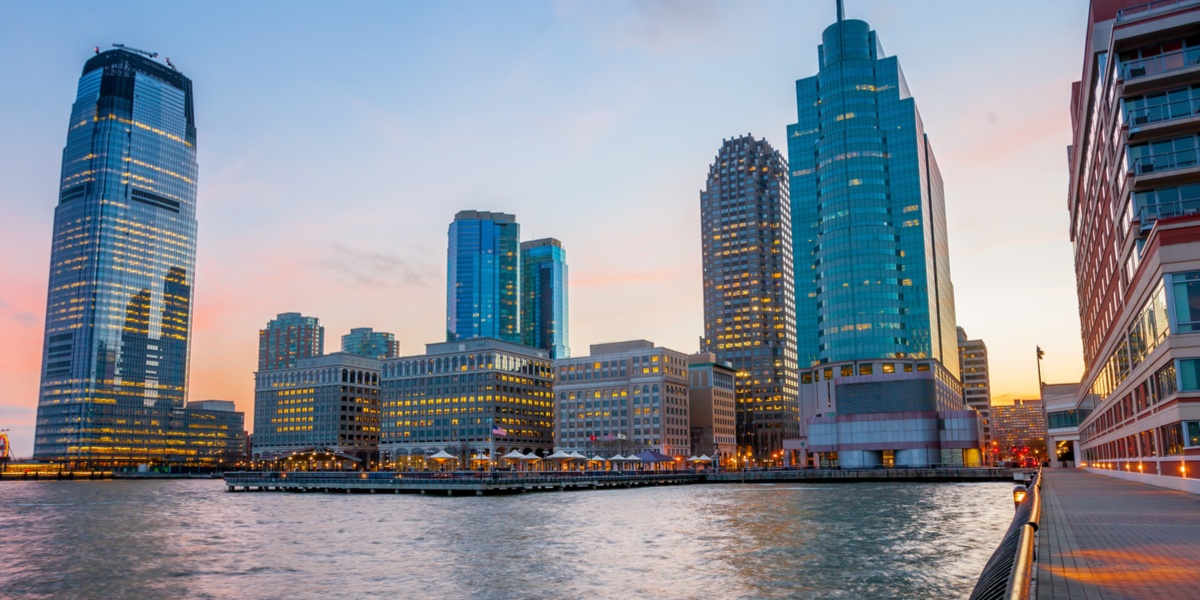Meeting the New Jersey Energy Code in Commercial and Large Residential Buildings

The New Jersey Energy Subcode (NJAC 5:23-3.18) establishes energy performance requirements for all new constructions and building renovations in NJ, and it is part of the Uniform Construction Code. We previously discussed the requirements for low-rise residential buildings, which are based on the 2015 International Energy Conservation Code (plus specific amendments for NJ). This article will focus on the commercial requirements, which are based on the ASHRAE 90.1-2013 standard.
As defined in the NJ Uniform Construction Code, residential buildings are only considered low-rise if their height is three stories or less; otherwise they are subject to the commercial requirements in the Energy Subcode. The main difference is that commercial requirements cover lighting systems, while residential requirements are limited to the building envelope and HVAC performance.
NJ Energy Subcode requirements not only change based on the type of building. There are two climate zones in the state, and some code requirements differ based on this:
- Climate zone 5A covers the counties of Bergen, Hunterdon, Mercer, Morris, Passaic, Somerset, Sussex and Warren.
- Climate zone 4A covers all other counties in New Jersey.
Note that buildings without space heating and cooling are exempt from the NJ Energy Subcode. In addition, it only applies for new constructions and additions; rehabilitated buildings are subject to the NJ Rehabilitation Subcode (NJAC 5:23-6).
Make sure your project meets the NJ Energy Subcode.
Compliance Procedure for Commercial Buildings
Unlike low-rise residential buildings, which have four energy code compliance options, commercial buildings only have two:
- Calculation-based compliance
- COMcheck software compliance
For both compliance methods, a design professional must sign and seal the respective documentation. However, an HVAC-R contractor may sign if the building falls under the occupancy groups and size thresholds defined as Class 3 by the Uniform Construction Code.
Calculation-Based Compliance
Just like in low-rise residential buildings, the thermal transmittance (U-value) is calculated for building envelope elements like walls, floors and roofs. For compliance, the building U-values must be less than the maximum values allowed by the code.
In the case of commercial buildings, the property owner must also submit lighting data: fixture and lamp types, along with their usage.
COMcheck Simulation
COMcheck is an energy modeling software from the US Department of Energy, which simulates energy performance based on building envelope features and equipment selection. There is also a residential version called REScheck, but in New Jersey you can only use it for code compliance in low-rise residential buildings. The main difference is that COMcheck includes lighting data and usage in the simulation, while REScheck is only based on the building envelope and equipment.
Note that there are many versions of COMcheck - make sure the ASHRAE 90.1 version is used. Alternative software packages are allowed, but only if they are approved by the US DOE and if they can simulate the building according to ASHRAE 90.1.
Passing the Inspection
Having an approved building design that meets the NJ Energy Subcode is only part of the compliance process. After the project is completed, it is inspected to ensure that actual work matches the approved design. The main features inspected are the following:
- Building insulation
- Lighting fixtures and their corresponding controls
- Mechanical systems and their corresponding controls
It is in your best interest to meet the NJ Energy Subcode requirements with the first attempt, since this speeds up project completion. Also keep in mind that energy efficiency is simpler to implement in the design phase, where there is no physical work and all changes are carried out in plans and specifications. Editing documents is much faster and cheaper than modifying buildings.
Commercial buildings in New Jersey are eligible for energy efficiency incentives through the SmartStart Buildings program, which is part of the NJ Clean Energy Program, covering both electrical and gas-fired equipment. These benefits are available for both new constructions and existing building upgrades. Work with qualified design professionals to make sure you meet the code while getting the incentives.

Michael Tobias
Michael Tobias, the Founding Principal of NY Engineers, currently leads a team of 50+ MEP/FP engineers and has led over 1,000 projects in the US
Join 15,000+ Fellow Architects and Contractors
Get expert engineering tips straight to your inbox. Subscribe to the NY Engineers Blog below.



